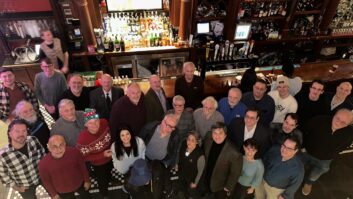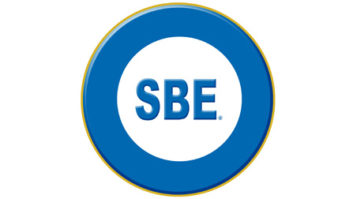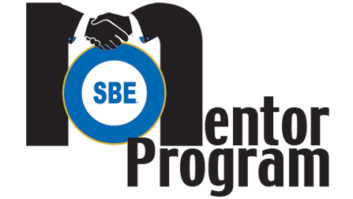Even though today it is an organization with approximately 5,000 members that can be found in all 50 states, there is only one Chapter One of the Society of Broadcast Engineers. That first chapter was founded in Binghamton, N.Y., and has since served as a model for the 113 chapters that were to follow. In searching for its Engineer of the Year, SBE Chapter One found inspiration in Bill Sitzman.
As an early member of the founding chapter, he is a designer of directional arrays, a consultant for radio engineering and an audiophile who began singing at age 18 and remains a loyal member and soloist of a masterworks chorale to this day. “Bill is also well known for his engineering prowess in AM directional array design [and] has also filled the chapter’s position of Frequency Coordinator for what seems like eternity, smoothing out events such as the Watkins Glen races,” said Gary Talkiewicz, director of engineering for WSKG and chairman of SBE Chapter One. “Members are humbled to have such an engineer as Bill Sitzman in our ranks.”
Radio World spoke to Bill Sitzman about his long career and his newest title as SBE Chapter One Engineer of the Year.
Radio World: How did you get started in the industry?
Bill Sitzman: While radio still had some live music, I was part of a singing group at age 18 on WHLD(AM) in Niagara Falls, N.Y. I also knew some of the engineering staff at CHVC(AM) in Niagara Falls, Ontario. Both stations were directional and respective staff engineers began answering questions and suggesting technical books to study. While learning more of commercial radio, I also had music training from the singing group’s accompanist. Hence to this day, engineering and music are still part of my life.
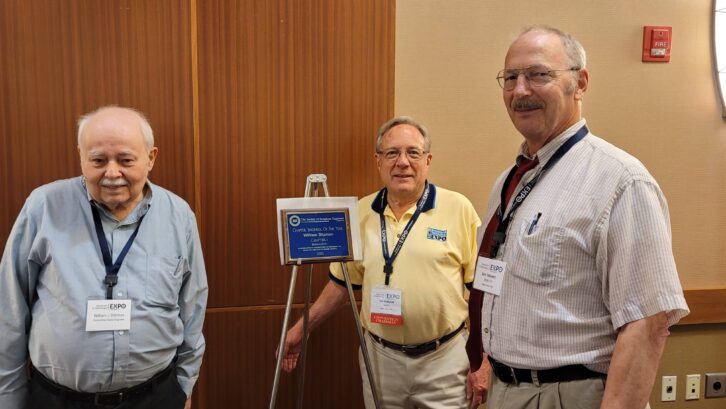
RW: From your background, it sounds like audio and radio have been a part of your whole family for some time.
Sitzman: Working in the broadcast industry brought many wonderful friends, from clients, to attorneys, to government officials in both the U.S. and Canada. Some clients became like family to my wife and me. Both of my families have Canadian connections — my father’s side from Luxembourg first settled in Welland, Ontario, and my mother’s family came from Prince Edward Island in Eastern Canada. As a matter of fact, her distant cousin Keith designed the directional arrays for CKLW(AM) in Windsor, Ontario, and CKOC(AM) in Hamilton, Ontario, among others. Living on the border, knowing English and Quebecois (French Canadian) would later serve me well.
RW: Can you tell me about your experience with Electronic Associates of Canada and how it led to you to further embrace the radio industry?
Sitzman: After working as a cameraman and announcer at a television station, then helping set up a new FM station on the border, an opportunity arose to work for and invest in Electronic Associates of Canada in the Toronto suburb of North York. The company designed and manufactured process control and test equipment for the paper industry. It was a rich experience learning industrial electronics, mechanics and safety.
I left [Electronic Associates] at the right time and was asked to help build several AM and FM stations. It brought an opportunity to gather a number of stations for which I prepared applications for power increase and nighttime operation. The attorneys for these stations referred more distant clients to me.
RW: What were the goals behind the founding of your firm IBC Engineering?
Sitzman: I founded IBC Engineering in 1973 and by 1980 Robert Lynch, an engineer, and Norman Hollenbeck, an engineering aide and draftsman, were hired. Since we worked in offices adjacent to my residence, versus high-priced rented facilities, I offered clients attractive fees. By 2012 we had amassed 710 clients in the U.S., Pacific and Latin America. I still maintained a happy relationship with Canadian engineers.
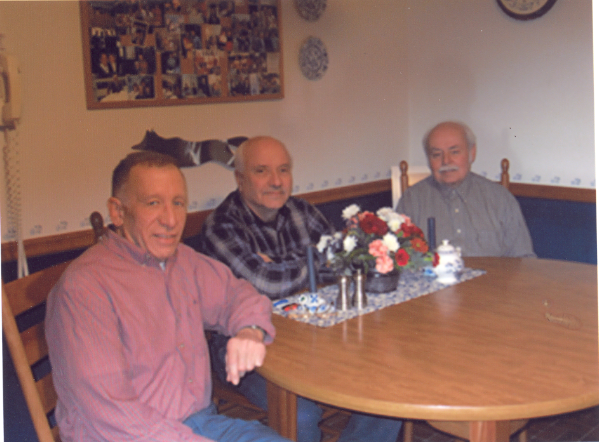
RW: Can you tell me a bit about your work in designing directional arrays? How did you get involved in that?
Sitzman: Regarding the first question, many of my clients are situated in areas where AM stations are quite congested and to make improvements would require directional operation. Some clients were seeking to add nighttime operation and this required a directional array. I always seek to use as few towers as needed. When the commission opened opportunities to improve coverage, we had a lot of stations calling my firm. Of course, when filing windows opened, we wound up designing my arrays all over the country. We even did applications for other engineers.
Often we were requested to design the phasing equipment and this was done with careful attention to both common point bandwidth and pattern agreement at the sidebands. It basically was a need we were very glad to fill. There have been a number of upgrades in phasing systems at some of our clientele. While I cannot mention the manufacturer, that company is now headed by a third generation and everything they do is quality.
My firm moved along with digital technology and we also helped Peter Moncure, head of RadioSoft, design his AM software.
RW: Did you have any mentors along the way?
Sitzman: Toronto-based Gordon Elder of Elder Engineering Ltd. was a great mentor and longtime friend. Some other mentors were Carl Smith of Smith Electronics of Cleveland, John Lundin and Richard Biby, who were in Washington when I first met them, as well as the late Charles Smith of Alexandria, Va.

RW: What is your take on the engineering profession today?
Sitzman: The engineering profession appears to have become smaller through the years. The industry has lost a number of talented engineers whom I surely miss. Having taught RF technology for a year at Alfred State College reminds me that most of my students are now in their late 60s or early 70s. I have much respect for those who are still practicing and am encouraged by the younger people entering the engineering workforce.
RW: You’ve been a part of the Society of Broadcast Engineers organization for some time. Can you tell me about your role as frequency coordinator why it is important to the chapter?
Sitzman: In 1973 I met Charles Hallinen and Gino Ricciardelli of SBE Chapter One. Impressed by the content of the meetings and a number of radio and TV engineers, in short order I became member #1370. We used to have about 20 to 30 in attendance. Due to my growing client list, I was able to help Gino Ricciardelli, then frequency coordinator; in later years Gino turned it over to me. Since many of the frequencies are adjacent to public safety and industrial frequencies, I take the position of coordinator seriously.
Frequency coordination may not have daily activity but I am always monitoring the database for anything that would impact either broadcast or public safety operations. The commission’s Daily Digest will post a list of proposed experimental or temporary operations and in some cases I may comment on a potential problem. One of the problems comes from stations making changes to RPU or STL operation without keeping the coordinator updated. Once in a while there is an AM station quite off frequency.
In one case, I dispatched my staff in opposite directions to carefully note the direction of the source. At the office, they looked at a 1:250,000 topo map and found the station. I called the engineer, and he reported the stuck crystal oven was too hot to touch. Sometimes I’ve helped coordinate frequencies for both Canadian and U.S. Coast Guards, since we are not far from Lake Ontario.
[Subscribe to Radio World Engineering Extra]
RW: I heard that you were involved to resolving issues around the Watkins Glen races, which is a racetrack in Watkins Glen, N.Y. What happened at that event?
Sitzman: One year while the Watkins Glen International Races were progressing, I received a call from an Ithaca broadcaster that his STL was interfered by someone carrying the races. I called the racetrack supervising engineer reporting the interfering frequency, to which he advised that no one was using anything near that channel. Suspecting it was a pirate, he issued a warning on the PA system. We never caught the pirate but the interference quit within an hour.
RW: What do you consider some of your biggest accomplishments?
Sitzman: While my firm has written many applications for 10 kW and even a 50 kW facility, our biggest accomplishment was to move the transmitter site of WHLD in Niagara Falls, N.Y. (where I began years ago) to a diplex into the 5-tower array of WNED(FM) in Hamburg, N.Y., just south of Buffalo. WHLD paid Gordon Elder’s firm to run needed radials in Canada and we even contracted a Lake Erie captain to help us make radial measurements over water when the proof- of-performance was being conducted.
RW: What does it mean to you to be named SBE Chapter One Engineer of the Year?
Sitzman: Being named SBE Chapter One Engineer of the Year was a true honor and made me look back on over 45 years of practice. Today I am still designing directional arrays and writing applications by myself. I retain my membership in the Toronto Chapter of the Audio Engineering Society and record the 20-voice Orpheus Chorale in Hornell, N.Y. each year and also do audio mastering. I not only sing in the group but also am a vocal soloist at two churches in Penn Yan, N.Y.
RW: There’s much to look back on within a radio career that’s been as long as yours. Are there any other stories you’d like to share?
Sitzman: There were some humorous events I recall in my career. While waiting for the chief engineer at one of my clients, I looked over the posted operator licenses and questioned the fellow on duty. I asked him to stand up a minute and point out his supposed license. I said, “This license lists you as 6 feet tall and you appear to be 5 feet 6 inches. Did you shrink?” He then explained that he had no license but borrowed the document from a friend. I immediately called the manager, who came and fired the operator and promptly took over.
Another story was shared with me by one of the FCC field operation bureau staff. During an inspection in one of the far-off states, that inspector checked the harmonics but noted the station’s field strength was higher than expected. Visiting the station, he noted a 1 kW transmitter in operation. He also made note of all the rooms and that evening drew a diagram of the building in his hotel room. The next day he returned and demanded access into the room in question and found a 5 kW transmitter operating. The inspector cited that owner for illegal operation at five times the authorized power. The word is that the license was pulled and the station was shut down.





